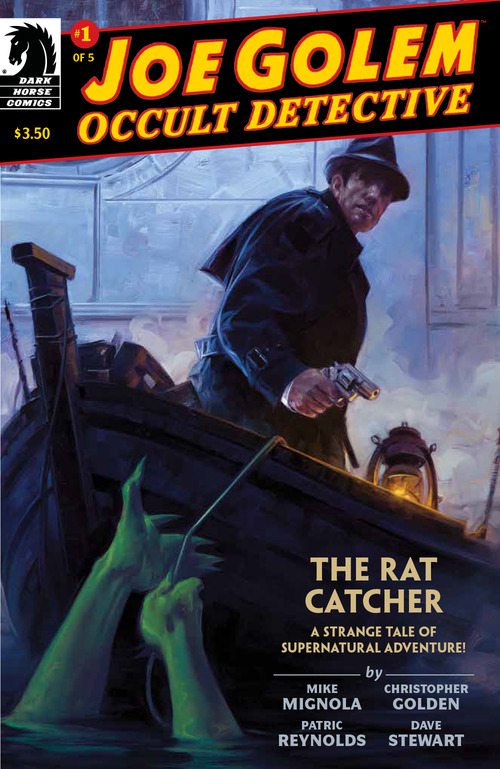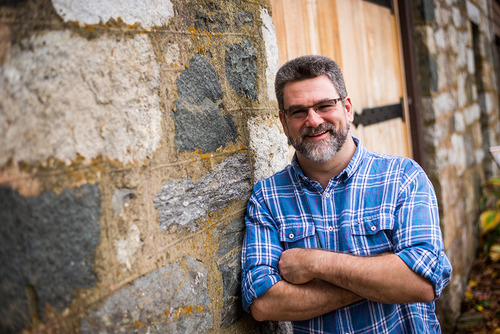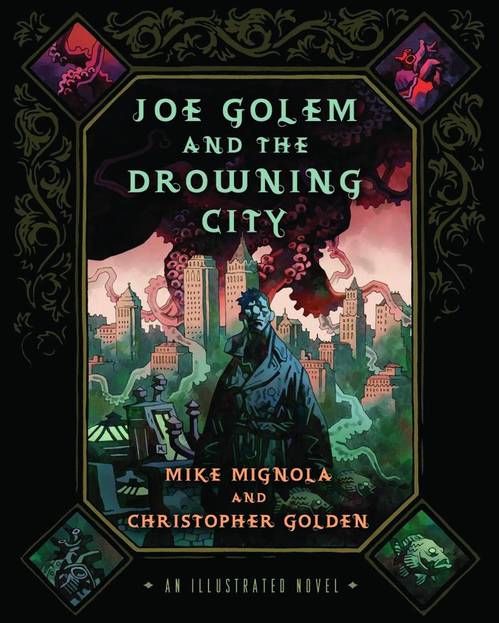Exclusive: Mignola and Golden Resurrect Joe Golem for Dark Horse This November
This November, Hellboy creator Mike Mignola and New York Times bestselling novelist Christopher Golden bring their original creation, Joe Golem, from prose to comics in the five-issue mini-series, Joe Golem: Occult Detective. Illustrated by artist Patric Reynolds (Aliens: Fire and Stone) and colored by frequent Mignola collaborator Dave Stewart, Joe Golem takes place in a murky, morally-compromised, partially submerged New York City, and follows the titular occult detective as he explores his own mysterious origins.
Paste got an exclusive first look at Dark Horse’s new series, and a comprehensive interview with Mignola and Golden about bringing Joe into comics, the pair’s evolving collaboration over the years and what’s next for the prolific creators.
![]()
Hellboy creator Mike Mignola & acclaimed novelist Christopher Golden Bring Joe Golem To Life Again In November 2015
Paste: Joe Golem: Occult Detective dives right in to the mythology and world the two of you introduced in The Drowning City. What do readers unfamiliar with the novel need to know before they crack open the first issue?
Mike Mignola: Nothing. The beauty is that it is a prequel to the novel, so you really don’t need to know anything. Everything is meant to set up to eventually adapting the novel, so the more you come in with no knowledge of the novel, even, the better, because then you will be surprised by things that happen in the novel.
Christopher Golden: Not a thing. While I’d love the comic readers to pick up the novel, you don’t have to have any prior exposure to the characters to step into this story. The events of this miniseries take place years prior to the novel. Of course, if you’ve read the novel there are certain things that will resonate for you a little stronger.
For those who are curious, though: in 1925, a cataclysm occurred that caused massive upheavals around the world, including an earthquake that caused the bedrock under lower Manhattan to sink and the sea level to rise at about the same time. From around Times Square downward, the island is under 20 to 30 feet of water. But New Yorkers are resilient and stubborn people, and a lot of them never left. They just adapted. The streets are now canals. Joe is an occult detective who works those streets under the guidance of his mentor, Simon Church, an aging Victorian detective who has kept himself alive with magic and strange mechanisms. Even as Joe goes about his work, he’s haunted by dreams and visions of another time, of a small village in Croatia centuries before, when a stone golem protected the locals from a band of inhuman witches…
Paste: When we meet the title character, he’s being kept in the dark about his origins by the clockwork man Simon Church. Flashbacks feature pretty heavily into the first issue—should we expect Joe to stumble across any major revelations or does his past continue to elude him?
Mignola: Well, I don’t want to give anything away. This is always the tricky thing about doing a prequel, especially because in the novel, he discovers who he is. You can’t really have him discover who he is [in the comic], but there are things we’ve worked in so the reader will be ahead of Joe in understanding stuff. Basically, we do get to do an origin story for him in the comic, which we never really got to do in the novel. We have to keep Joe in the dark to a certain extent, but at the same time, give this interesting backstory to the reader.
Golden: Joe’s not stupid. He’d have figured out the meaning of his visions long ago if it weren’t for the fact that Church thinks that would be a bad idea. The struggle between what he knows and suspects, and Church’s concerns about that, is a dark current that flows through the series.
-

-

-

-

-

-

-

-

-

-

-

-

-

-

-

-

-

-

-

-

-

-

-

-

-

-

-

-

-

-

-

-

-

-

-

-

-

-

-

-












































